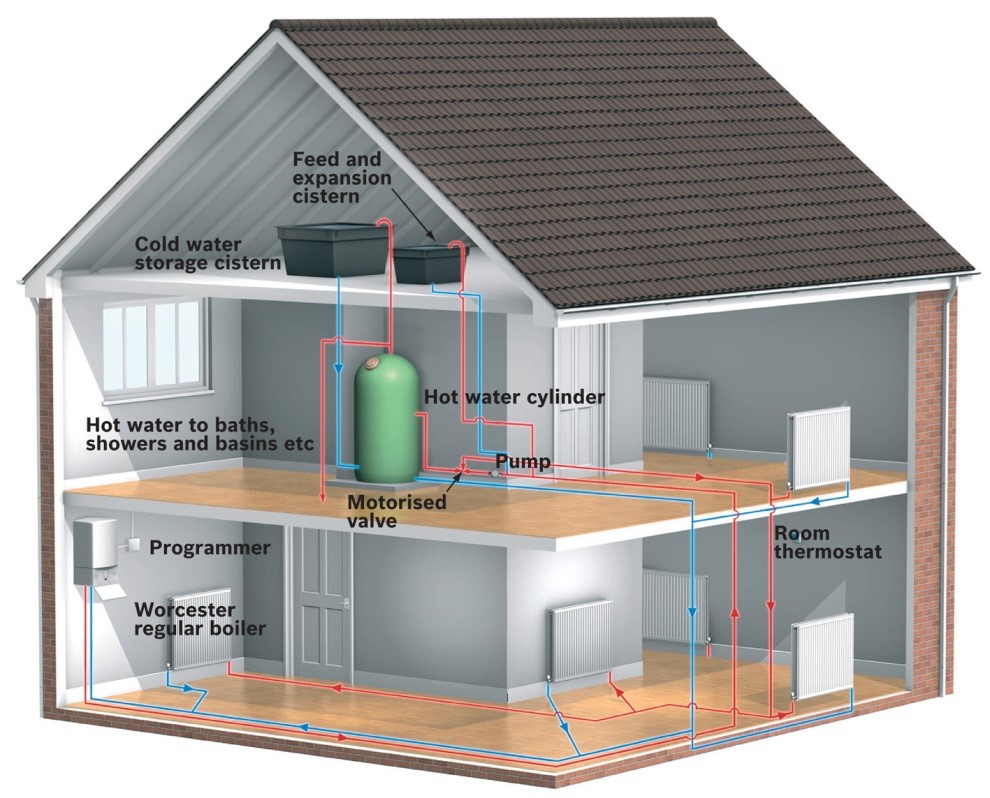Overview
The necessity for efficient heating and cooling systems grows with the changing of the seasons. Your comfort and energy costs can be greatly reduced with an effective HVAC (Heating, Ventilation, and Air Conditioning) system, regardless of whether you’re shivering in the winter or running away from the summer heat. The goal of this article is to give a thorough overview of heating and cooling systems, including information on kinds, important parts, and efficiency-boosting advice.
Comprehending Heating Systems

The most popular type of heating system is an oil, natural gas, or electricity-powered furnace. They function by heating air and using ducts to distribute it around the house. Energy-saving technologies like programmable thermostats and variable-speed motors are standard on modern furnaces.
Boilers:
To warm an area, water or steam is heated in boilers and then pumped through radiators or underfloor pipes. They give steady heat and are frequently more energy-efficient than furnaces. A common option that provides both comfort and efficiency is radiant floor heating.
Heat Pumps:
Heat pumps are adaptable devices that have the ability to cool and heat an area. During the colder months, they take heat from the earth or the atmosphere and bring it inside. They conduct the opposite procedure to cool the interior during warmer weather. Even though they are effective, the outside temperature can affect them.
Comprehending Cooling Systems
Air conditioners:
By eliminating heat and moisture, air conditioning systems are made to cool interior areas. To provide a comfortable climate, they absorb and release heat using a refrigerant. Models that are energy-efficient and frequently bear the ENERGY STAR rating contribute to lower electricity usage.
Mini-split systems that operate without ductwork:
These systems offer both heating and cooling capabilities. Mini-split systems, which include of interior air handlers and an outside condenser unit, provide zoning features that let you control the temperature in different rooms separately.
Evaporative Coolers:
Also referred to as swamp coolers, evaporative coolers are frequently used in arid climates to chill the air by the evaporation of water. Although they are environmentally beneficial and energy-efficient, they might not be appropriate in humid areas.
Increasing Power Effectiveness:
Installing a programmable thermostat enables you to schedule temperature changes, maximizing energy efficiency according to your daily schedule. Over time, this can lead to significant energy savings.
Frequent Maintenance:
Maintaining your system at its most efficient level involves routine tasks including cleaning filters, monitoring refrigerant levels, and examining the ducting. Make an appointment for expert maintenance once a year or more.
Proper Insulation:
A house with proper insulation keeps cool in the summer and maintains heat in the winter. Energy savings result from proper insulation since it lessens the strain on your heating and cooling systems.
When it’s time to replace your air conditioning or heating system, think about making an investment in energy-efficient technology. For air conditioners and furnaces, look for models with high AFUE (Annual Fuel Utilization Efficiency) and SEER (Seasonal Energy Efficiency Ratio) ratings.
In summary
A comfortable and energy-efficient interior space requires a heating and cooling system that is well-designed and maintained. A more economical and sustainable approach to climate management in your house or place of business can be achieved by being aware of the many system types, their parts, and the energy-saving techniques that you can integrate into your daily routine.
You may achieve maximum comfort and reduce your energy costs and environmental effect by applying best practices and remaining up to date on the most recent developments in HVAC technology. This book offers a strong basis for choosing heating and cooling systems that are customized to your needs, whether you’re looking to replace your old system or investigate new choices.


Pingback: Lambeth Electricians: Illuminating Excellence in electrical offerings
Pingback: Tooting Electricians: Illuminating Excellence in electric services - AppCloneScript
Pingback: Tooting Electricians: Illuminating Excellence in electric services
Pingback: 10 Tips for Home Staging to Increase Home Sales